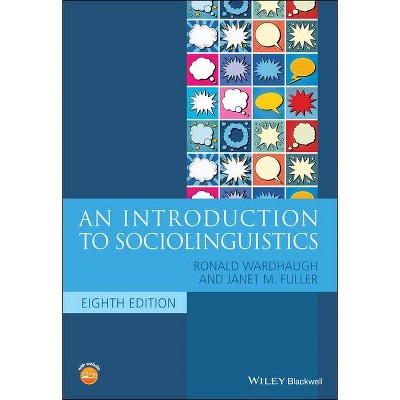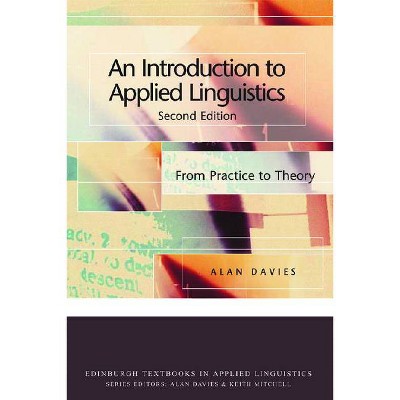Introduction to Pragmatics - (Blackwell Textbooks in Linguistics) by Betty J Birner (Paperback)

Similar Products
Products of same category from the store
AllProduct info
<p/><br></br><p><b> Book Synopsis </b></p></br></br><i>Introduction to Pragmatics</i> guides students through traditional and new approaches in the field, focusing particularly on phenomena at the elusive semantics/pragmatics boundary to explore the role of context in linguistic communication. <ul> <li>Offers students an accessible introduction and an up-to-date survey of the field, encompassing both established and new approaches to pragmatics</li> <li>Addresses the traditional range of topics - such as implicature, reference, presupposition, and speech acts - as well as newer areas of research, including neo-Gricean theories, Relevance</li> <li>Theory, information structure, inference, and dynamic approaches to meaning</li> <li>Explores the relationship and boundaries between semantics and pragmatics</li> <li>Ideal for students coming to pragmatics for the first time</li> </ul><p/><br></br><p><b> From the Back Cover </b></p></br></br><p>Pragmatics is the study of language use in context. It concerns itself with the relationship between language and the humans who use it, and specifically how their beliefs and intentions affect both the form and the interpretation of their utterances. This introductory textbook presents an up-to-date survey of the field, addressing the traditional range of topics within pragmatics - such as implicature, reference, presupposition, and speech acts - as well as newer areas of research including neo-Gricean theories, Relevance Theory, information structure, inference, and dynamic approaches to meaning.</p> <p>Throughout the book the relationship between semantics and pragmatics is continually addressed and reassessed. By encompassing both traditional and new approaches, and focusing particularly on phenomena at the semantics/pragmatics boundary, <i>Introduction to Pragmatics</i> sheds light on one of the major issues in the field: the role of context in linguistic communication.</p><p/><br></br><p><b> Review Quotes </b></p></br></br><br><p>"Birner has made an impressive attempt at simplifying the field of pragmatics and connecting it with real-life situations, unprecedentedly foregrounding its great potential in coming to terms with social issues. Thus, the value of <i>Introduction to Pragmatics</i> goes beyond the audience-borders set by the author and the publisher. All pragmaticians, applied linguists, stylisticians, sociolinguists and other scholars who are interested in the way language behaves in society should find the book an asset." (<i>Discourse Studies</i>, 13 May 2015)</p> <p>"Birner's <i>Introduction to Pragmatics</i> offers graduate students and upper-level undergraduates an accessible introduction that addresses the traditional range of topics within pragmatics through real-life examples." (<i>The Modern Language Journal</i>, 10 November 2014)</p> <p>"...this book achieves success and relevancy in ways where other texts fall short. (<i>The LINGUIST List</i>, 9 July 2013)</p> <p> </p><br><p/><br></br><p><b> About the Author </b></p></br></br><b>Betty J. Birner</b> is Professor of Linguistics in the Department of English at Northern Illinois University. She is the author of several books, including <i>The Discourse Function of Inversion in English</i> (1996), <i>Information Status and Noncanonical Word Order in English</i> (with Gregory Ward, 1998), and<i> Drawing the Boundaries of Meaning: Neo-Gricean Studies in Pragmatics and Semantics in Honor of Laurence R. Horn</i> (with Gregory Ward, 2006).
Price History
Price Archive shows prices from various stores, lets you see history and find the cheapest. There is no actual sale on the website. For all support, inquiry and suggestion messagescommunication@pricearchive.us




















